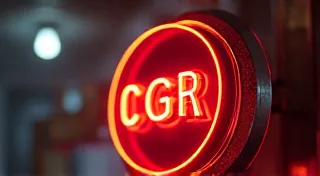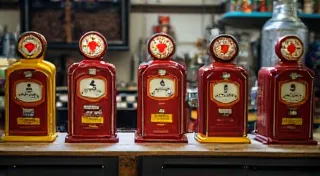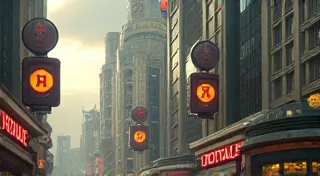Matching Original Colors: A Guide to Repainting Vintage Gas Signs
Restoring vintage gas station signs is a rewarding hobby, connecting us to a bygone era of Americana. While structural repairs and cleaning are vital, accurately repainting the sign to match its original colors is often the most challenging, and arguably the most impactful, step in the process. A sign perfectly restored to its original glory becomes a true piece of history, while a mismatched color scheme detracts from its authenticity and value. This guide will walk you through the techniques and considerations necessary to achieve an accurate and historically correct repainting of your vintage gas sign.
Understanding Original Colors: Beyond the Obvious
It's tempting to simply match the visible color on a faded sign. However, years of exposure to sun, rain, and pollution dramatically alter pigments. What appears as a dull beige today might have been a vibrant cream when new. The key is to understand the factors contributing to color change and to employ techniques to account for them.
Fading and UV Degradation
Ultraviolet (UV) light is the biggest culprit in color fading. Certain pigments are more susceptible to UV degradation than others. Reds, purples, and yellows often fade significantly. Blues and greens are generally more stable, but even they are affected over time. The intensity of sunlight exposure – a sign facing west will fade more than one facing east – also plays a crucial role.
Oxidation and Chemical Reactions
Exposure to oxygen and pollutants in the air can chemically alter pigments, causing them to darken or shift in hue. Rain, containing acids from air pollution, can accelerate these reactions.
Original Paint Chemistry
The types of paints used on vintage gas signs also influenced their longevity and how they aged. Early signs often used lead-based paints, known for their durability and vibrant colors. While lead-based paints are no longer used, understanding they were often employed can offer clues to the original formulations. Later signs used nitrocellulose lacquers and enamel paints, each with different fading characteristics.
Gathering Color Information: Research and Analysis
Accurately repainting a vintage gas sign starts with thorough research. Don’t rely solely on the faded colors before you.
Manufacturer’s Documentation
The holy grail of color matching is finding the manufacturer’s original color charts or specifications. These are rare, but worth searching for in archives, online forums dedicated to vintage gas signs, and auction records. Even partial information can provide invaluable clues.
Original Advertising Materials
Look for original advertisements, brochures, or postcards featuring the same sign or similar models. These materials often depict the sign in its original colors and offer a more accurate representation than the aged sign itself. Online archives, historical societies, and libraries are good sources for these materials.
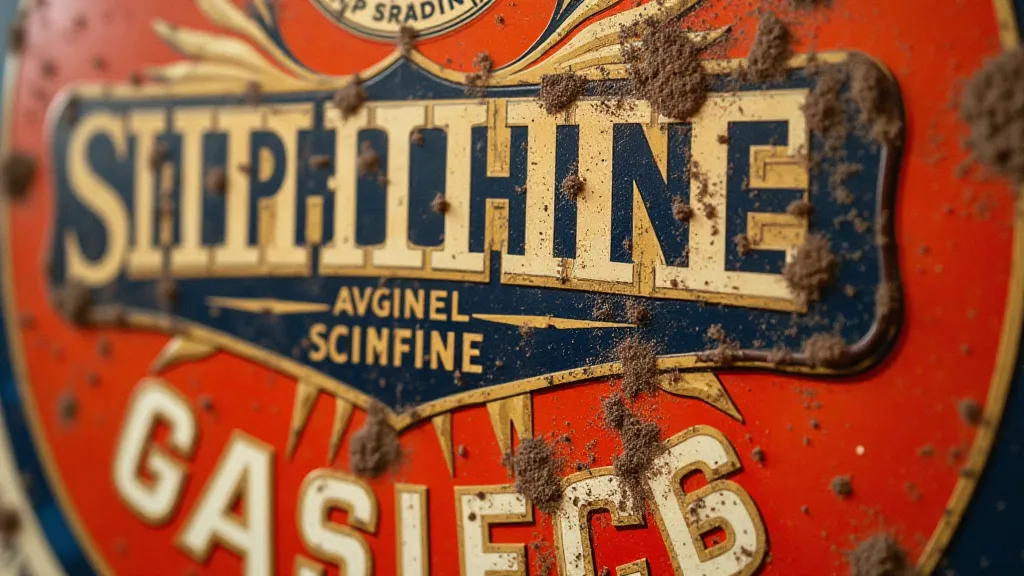
Comparing to Other Examples
Search for other examples of the same sign in various states of restoration. Compare the colors and note any variations. Remember that signs from different regions or production runs might have slight color differences.
Color Matching Tools: Spectrometers and Colorimeters
For the serious restorer, investing in a color spectrometer or colorimeter can be worthwhile. These devices measure the spectral reflectance of a surface, providing precise color data that can be used to formulate matching paints. While initially an investment, they offer accuracy and repeatability.
## Choosing the Right Paint: Period-Correct FormulationsOnce you’re confident in your color information, selecting the right paint is crucial. Modern paints, even those claiming to be “vintage-style,” often behave differently than the original formulations.
Lead-Based Paint Alternatives
While lead-based paints are historically accurate, their use is now prohibited due to health and environmental concerns. Fortunately, modern alternatives are available that mimic the properties of lead-based paints, offering excellent adhesion, durability, and vibrant colors.
Acrylic Enamels
Acrylic enamels are a popular choice for vintage gas sign restoration. They offer good color retention, UV resistance, and ease of application. Choose a brand known for archival quality and color accuracy.
Nitrocellulose Lacquers
Nitrocellulose lacquers were commonly used on earlier signs. They offer a glossy finish and fast drying times. However, they are less durable than enamels and more susceptible to damage from solvents and UV light.
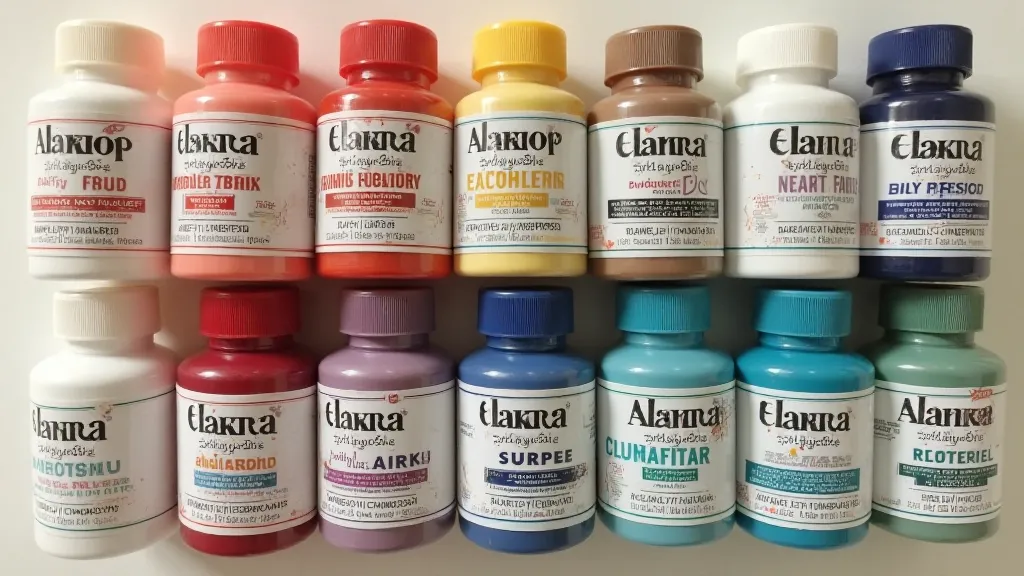
Considering the Original Finish
Determine what type of finish was originally applied to the sign (glossy, satin, matte). This impacts the overall appearance and can influence the choice of paint and topcoat. Multiple thin coats are always preferable to one thick coat, regardless of the paint type. This results in a smoother, more durable finish.
## Repainting Techniques: Achieving AuthenticityEven with the correct colors and paints, proper application is essential for a successful restoration.
Surface Preparation is Key
Thoroughly clean and prepare the sign’s surface. Remove any rust, old paint, or contaminants. Sanding is often necessary to create a smooth, even surface for the new paint to adhere to. Priming is almost always required, especially if the original paint has been completely removed.
Applying Thin Coats
Apply multiple thin coats of paint, allowing each coat to dry completely before applying the next. This minimizes runs and drips and ensures a more even color distribution.
Masking and Stenciling
If the sign has lettering or graphics, use masking tape and stencils to protect those areas while applying the background color. Precision and patience are essential for clean lines and crisp edges.
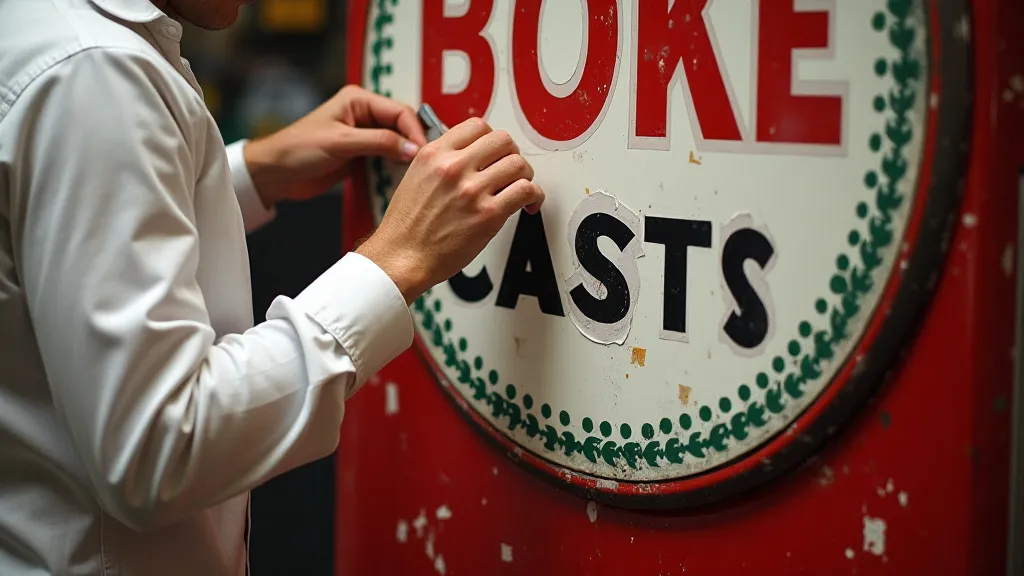
Topcoats and Clearcoats
Once the base colors are applied, consider applying a clear topcoat to protect the paint and enhance the finish. Choose a clearcoat that is compatible with the base paint and that provides the desired level of gloss.
## Final Thoughts: Patience and PreservationRestoring vintage gas signs is a labor of love that requires dedication, patience, and a commitment to accuracy. By following these guidelines, you can ensure that your restored sign is not only visually appealing but also a historically correct representation of a bygone era. Remember that preservation is the ultimate goal; strive to capture the original beauty and character of these iconic pieces of Americana for generations to come.
